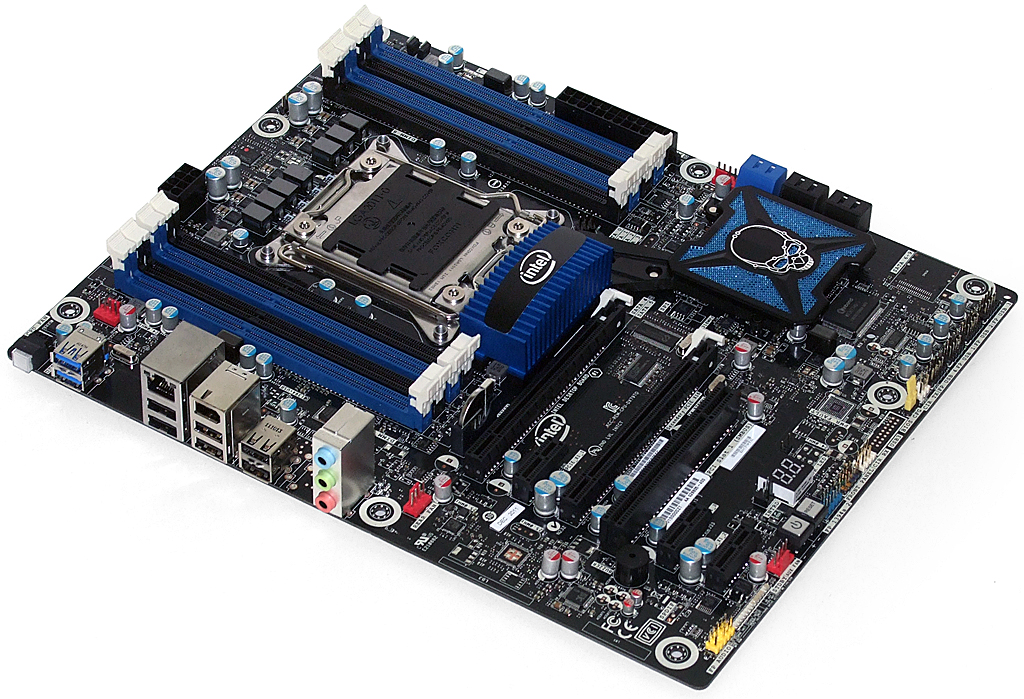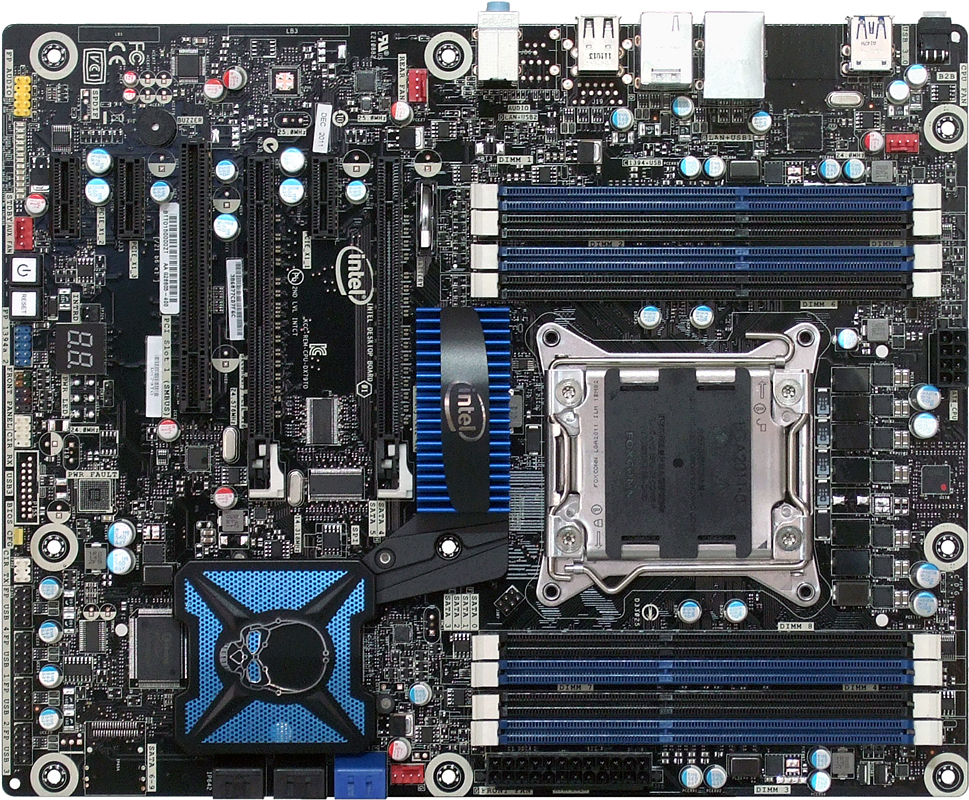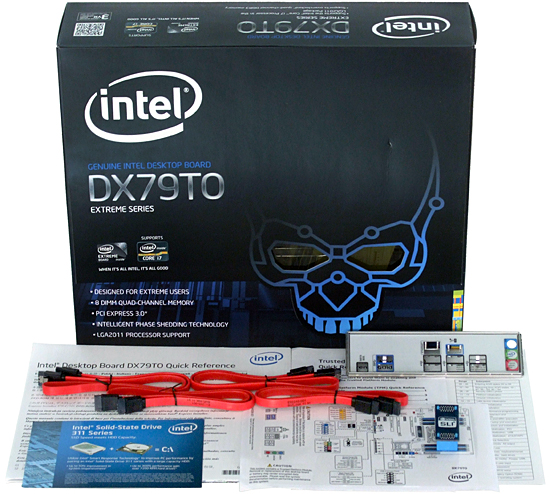Six $200-$260 LGA 2011 Motherboards, Reviewed
We know that Intel's X79 Express platform hosts the fastest desktop processors in the company's portfolio. But can it be made more affordable? We round up the least-expensive $200-$260 motherboards to determine how much you have to give up for cheap X79.
Intel DX79TO
Intel now counts itself amongst the motherboard vendors with thorough overclocking functionality. Its DX79TO stands out most clearly for its lack of passive voltage regulator cooling compared to the other boards tested in this round-up. A fairly large heat sink positioned where you would have expected to find a northbridge is nothing more than an extension of the PCH cooler that alleviates any need for a chipset cooling fan.
Intel adds two USB 3.0 ports to its rear panel and not much else. Though a Port 80 diagnostics display, a power button, and a reset switch all aid in bench testing, IEEE-1394a is its only other concession to add-in connectivity.
We would expect Intel’s reduced-price motherboards to maximize the platform's built-in capabilities, and were pleased to find eight memory slots available for quad-channel upgrades. On the other hand, a mere three 1/8" analog audio jacks on a board that lacks even a single digital output is far more disappointing, and we're left to wonder where the CPU's eight remaining lanes--normally reserved for a third graphics slot--have gone.
At least the board still includes Intel’s Back-to-BIOS button, which allows the system to boot at its default configuration, while still retaining custom settings in its firmware GUI.
While a mere two graphics slots is likely sufficient for most enthusiasts, those same enthusiasts could save even more money by simply switching to LGA 1155. Slot connectors are relatively cheap, and the eight lanes that most competing products use for a third slot are native to all LGA 2011 CPUs. Intel doesn't even take advantage of the reduced graphics support by spacing remaining slots farther apart for increased graphics cooling. Though we're certain some LGA 2011 buyers are simply looking for a low-cost yet reliable way to support Intel's latest six-core processors, competing platforms that include both an extra graphics slot and extra space between the two primarily slots should be far more attractive to the majority of buyers.
A board with fewer internal headers should inherently be easier to lay out, though we would have preferred to find the front-panel audio header a little further forward from its bottom-rear corner placement. The cables of some cases come up less than an inch short of reaching this location.
Four SATA cables and a single SLI bridge illustrate Intel’s focus on cutting cost in the DX79TO’s least-significant places. These savings add up to a board that comes in as the least expensive of today’s competitors, in spite of Intel’s reputation for arming its boards with stability through thorough validation.
Get Tom's Hardware's best news and in-depth reviews, straight to your inbox.
-
I like Asrock boards. I have an 880GM-LE mATX and a Z68 Pro3 Gen3 ATX and both are good performance and price-performance wise.Reply
-
hellfire24 Asrock is dominating both high end and mid range market.extreme3/gen3 1155 is awesome and cheapest pci-e 3.0 sli capable mobo.Asrock FTW!!!Reply -
Achoo22 ReplyQuite simply, the costs associated with Sandy Bridge-E are higher, in part because of Intel's prices and also because the boards are more difficult to design.
Since the boards all have vastly superior profit margins, your statement is misleading. Why is everyone too afraid to reveal the truth about motherboard pricing? -
AlexIsAlex Would it be possible, in future motherboard reviews, to include a measure of the cold boot (POST) time? This is something that different bioses can be differentiated on, and UFEI offers the potential for very fast boots if manufacturers take advantage of it properly.Reply
A comparison of the time between the power button being pressed and the installed bootloader starting would be very interesting to me. I was thinking it might be easiest to measure this by having no OS on the boot media and measuring the time to the "please insert boot media" message, but I'm sure you can think of other ways of doing it.
I'm also informed that on some boards the boot time varies dramatically dependent on whether any Overclocking is enabled, as compared to the stock settings - that would also be worth knowing. -
americanbrian your feature table says the asrock extreme 4 comes with an 8 phase voltage regulator, but the text of article says 10 phase...which is it ?Reply -
KT_WASP crisan_tiberiuASRock = ASUSReply
not anymore, asrock is no longer affiliated with Asus and is owned by Pegatron Corp. -
memadmax I wish tom's would do a "best motherboards for the money" or something close to that.Reply



